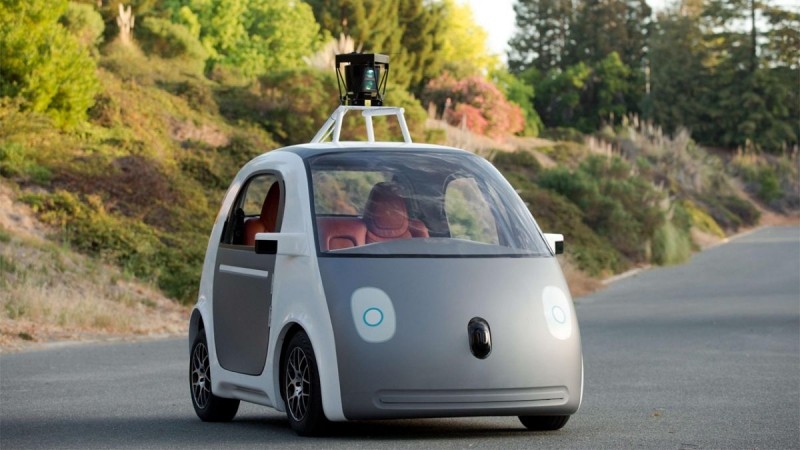
If you’ve read all the headlines about self-driving “smart cars” over the last few days or months, you’d be excused for thinking that mainstream autonomous cars are just around the corner. Unfortunately, it just isn’t so. (Yes, even in spite of Tesla’s announcement last week.) It’s not that they’re not on their way—they certainly are—but expectations about what we’ll actually get and when seem to be out of whack with reality.
Part of the problem seems to be a definitional one. The US National Highway Traffic Safety Administration (NHTSA), as well as its European equivalent, lay out several different levels of autonomous cars. Level Zero is no autonomous features and Level One is for things like adaptive cruise control, which has been around for years. Level Two is for multiple systems working together, such as adaptive cruise control with lane centering, automatic parking and other features we’re starting to see enter the market now.
Critically, in all of these cases, the driver is expected to stay in complete command of the car. The jump to Level Three is a big one because it enables limited autonomous driving where, in certain situations, such as sitting in bumper to bumper traffic, the driver is given the ability to officially cede control of the car to the autonomous system. So, for example, you could legally read email and tweets on your smartphone while sitting in the driver’s seat (instead of doing it illegally, as so many currently do). Even here however, according to the NHTSA’s definition, “the driver is expected to be available for occasional control…” Giving complete control over to the car for the entire trip, what I believe many people think of when they hear about autonomous cars, doesn’t happen until we reach Level Four.
The announcement from Tesla last week about adding some autonomous driving capabilities to certain of its Model S sedans via a software update this summer does appear to be a Level Three-type announcement. But, as others have pointed out, whether it will actually be legal to use those features any time soon is far from clear. That’s at the heart of the problem.
The real challenges here has more to do with liability and legality than anything else. Who’s responsible, from an insurance perspective for example, if an autonomous car hits someone or something? What level of safety can governmental agencies (and car makers) guarantee? These are some of the hardest problems to solve and the ones likely to take the longest time to resolve. They are also the reason why no states have officially allowed the use of autonomous cars in anything but a testing mode (and typically only with a special license).
The technology of making cars function autonomously is obviously coming much faster than the legislation.
The technology of making cars function autonomously is obviously coming much faster on prototype cars and other test systems. Not surprisingly, it’s these efforts that have started to generate so much press attention. In addition to Tesla’s announcements, there have been Google’s autonomous car experiments and Audi’s 900+ mile autonomous drive from Palo Alto, CA to Las Vegas just before this year’s CES show. Last week, Nvidia announced their Drive PX smart car platform tools, which provide the ability to connect up to 12 cameras to a development board with two Tegra X1 CPUs and let virtually anyone (with $10,000) start working on their own automated cars. Throw in provocative comments like Tesla CEO Elon Musk’s at last week’s GPU Technology Conference where he predicted that, in the future, non-autonomous cars would be outlawed because of how unsafe they would be perceived to be, and you have the perfect stew of unrealistic expectations.
But you also have to consider more practical issues. As Musk pointed out at that same event, there are roughly 2 billion cars on roads around the world and the auto industry’s maximum output level is roughly 100 million per year. That means, even if the industry started producing nothing but autonomous cars tomorrow, it would take 20 years to completely replace the installed base.
The real problem is, because we’re seeing tech industry companies start to get involved with the auto industry, we’re applying tech industry development speed expectations to autonomous cars. New iterations of smartphones take 6-12 months, so a few years should be plenty to tackle something like autonomous cars, right? Well, no.
The reality is we probably won’t be seeing usable Level Three-types of features in cars we can buy off the lot until the beginning or even middle of the next decade, and fully automated Level Four could take until 2030 or later. By the way, this should also put a new perspective on when (ignoring the even more important “if” question) Apple might enter the car market.
I’m certainly excited about the possibilities of what autonomous car features can bring, but I think we need to keep our expectations in check.
Bob O’Donnell is the founder and chief analyst of TECHnalysis Research, LLC a technology consulting and market research firm that provides strategic consulting and market research services to the technology industry and professional financial community. You can follow him on Twitter @bobodtech. This article was originally published on Tech.pinions.